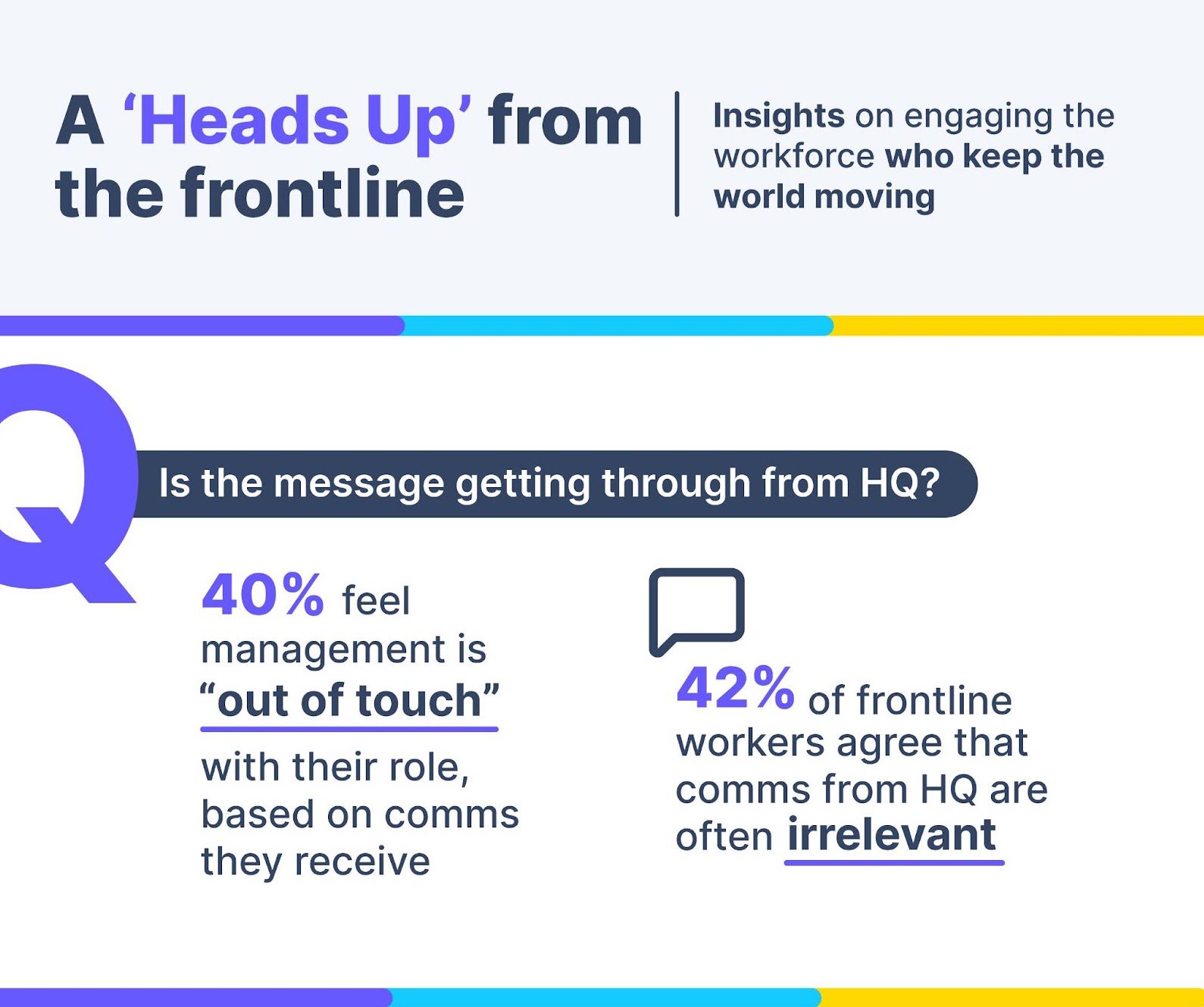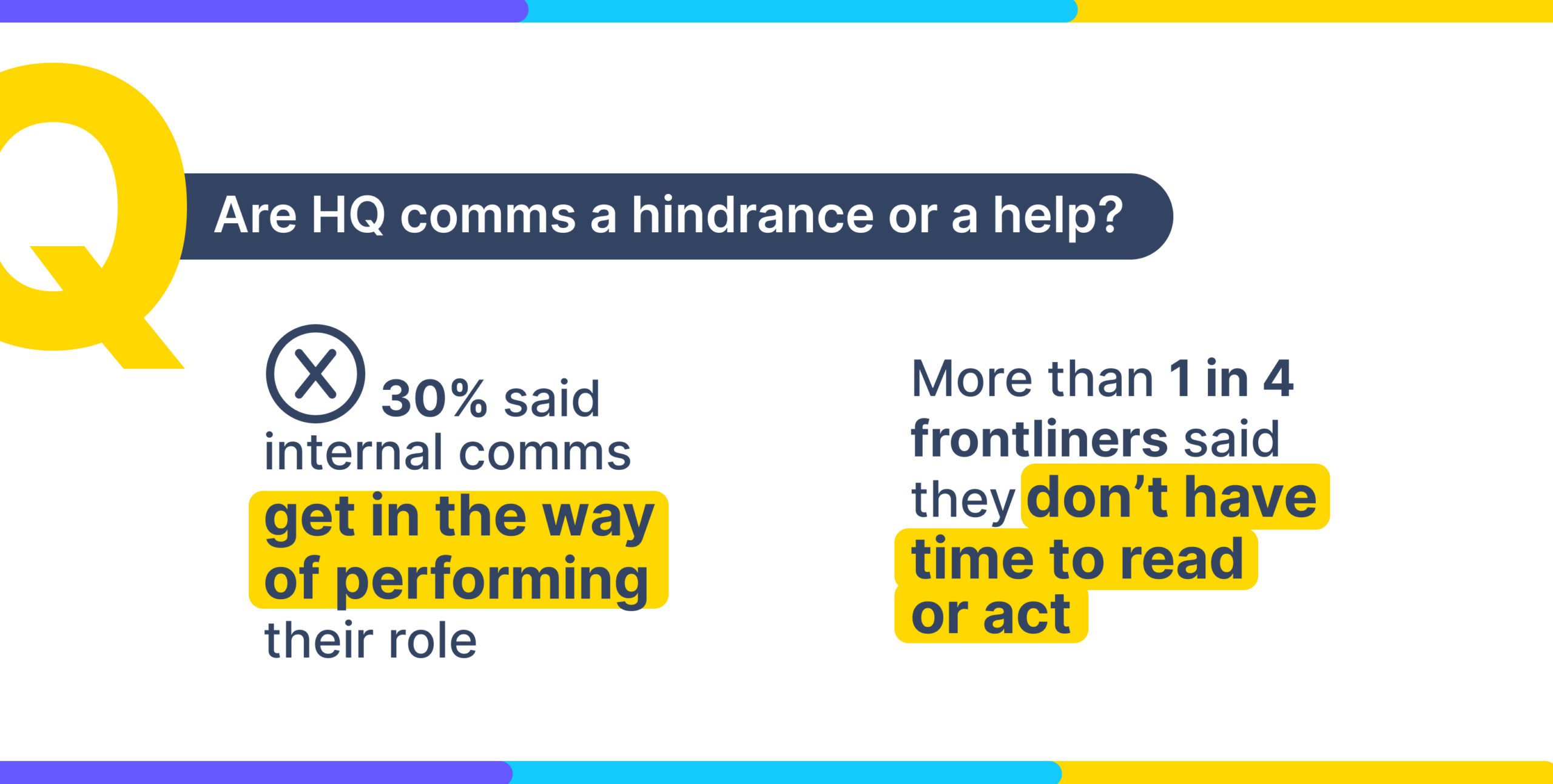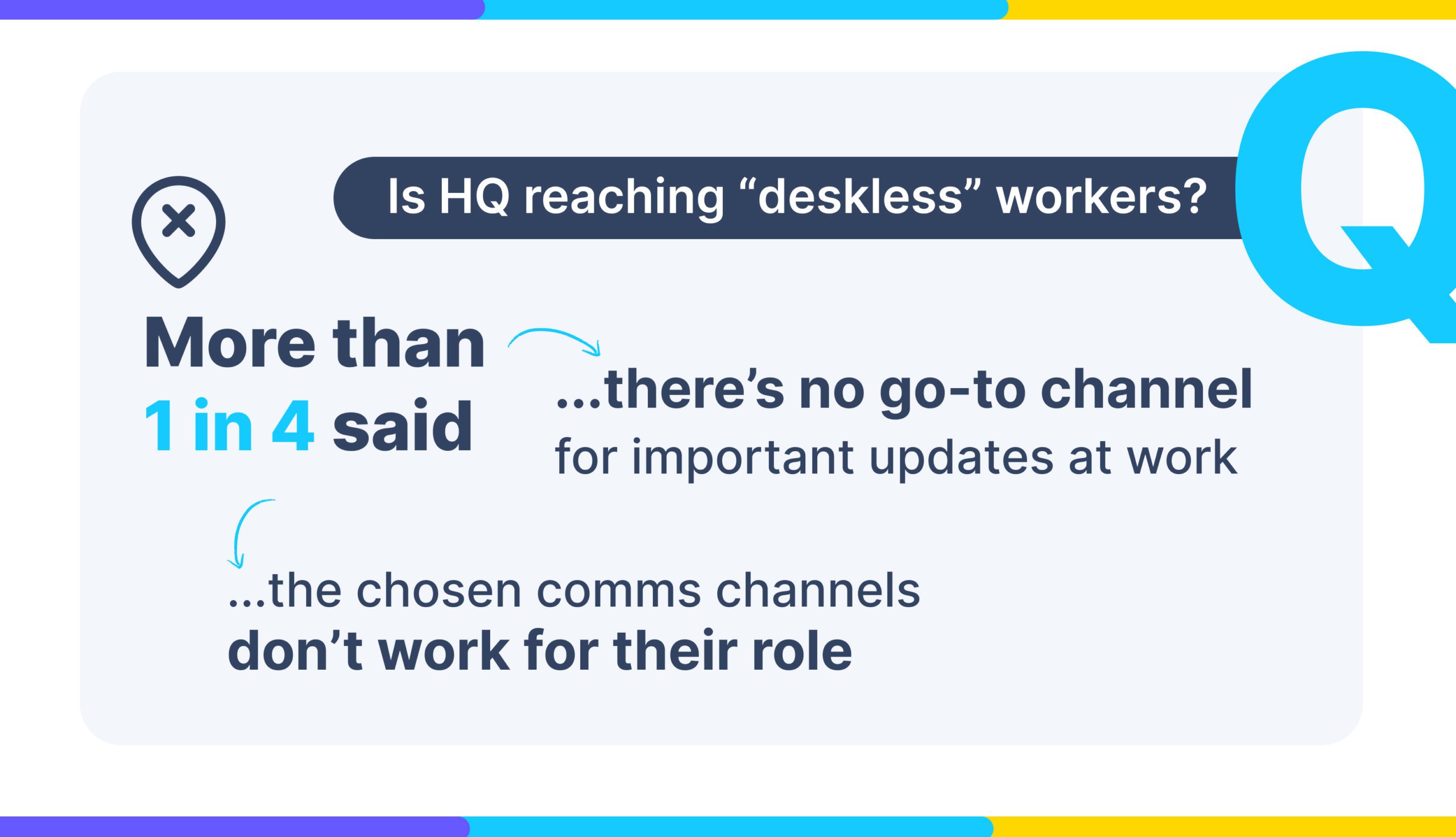Strategy and planning is one thing. The reality of how teams work is another. Understanding how the frontline workforce operates is a constantly moving target — and a recent survey we commissioned revealed that management can be off the mark, especially when it comes to communication.
To achieve their best, people need time and space to focus on the work that matters most. This means communication is key. Sending and receiving information through several channels creates a lot of noise. Important messages are drowned out, and it’s harder to prioritize and keep track of work. And as organizations become more collaborative, keeping everyone on the same page is more important than ever.
This is readily apparent in our new survey, conducted in partnership with YouGov. The results revealed a widening divide between frontline workers and their HQ counterparts.

More than one in three (40 percent) frontline workers said management is “out of touch” with their role based on the communications they receive from HQ.* With frontliners making up 80 percent of the global workforce, the data shines a light on major opportunities to better engage the workforce largely responsible for keeping the world moving.
The Survey Also Revealed …

- More than one in four frontline workers (32 percent) don’t have time to read or act on HQ communications, and more than one in four (30 percent) said internal communications get in the way of performing their role and tasks.
- More than one in three frontline workers agree the communications they receive from HQ are often irrelevant (42 percent) and not engaging (43 percent).
- Almost half of the frontline workers (49 percent) said they couldn’t “put a face to the name” of most HQ team members they communicate with.
The Medium Makes the Message …

The survey also spotlighted the importance of one central channel for critical communications that’s accessible and practical for frontline teams:
- More than one in four American frontline workers (28 percent) said there was no go-to communication channel for important updates in their workplace
- More than one in four American frontline workers (32 percent) stated that if there was a channel, it didn’t actually work for their role.
“Given most businesses are dealing with the effects of supply chain issues and labor shortages, communicating with teams on the front line is more critical than ever. However, frontline workers can be challenging to reach given they aren’t always at a desk and often don’t have a company email address.
“Many businesses have continued to invest in providing their white-collar workers with high-quality tools and technology for remote communication, but enabling the front line is a blind spot for some organizations. There’s a real opportunity to improve in this space, particularly with low-cost, mobile-first technology.”
— Bob Butler, Chief Customer Officer, SafetyCulture
Time for a Simple ‘Heads Up’?
Ultimately, you want to give people the type of communication they desire. Successful organizations understand this and the importance of communication for a healthy workplace. Utilize microlearning platforms to hold training at regular intervals to make these communication skills part of workplace culture. With free courses specifically catered to frontline workers, you’ll be well on your way to fostering a positive communications-focused environment.
Beyond training, equipping teams with the right communication tools can help encourage team members to share ideas or any issues, enhance productivity, and make remote team members feel heard and connected.
To help improve communication between HQ and the front line, we introduced a new “Heads Up” feature in our flagship product, iAuditor. The feature creates a one-stop messaging broadcast center and allows organizations to record short videos or image-based messages and send them out to team members at the click of a button.
*About the Research
All figures, unless otherwise stated, are from YouGov Plc. Total sample size was 1,980 adults (858 U.S., 553 Australia, 569 U.K.). Fieldwork was undertaken during April 2022. The survey was carried out online. The figures have been weighted and are representative of U.S., U.K. and Australian frontline workers (aged 18+).




